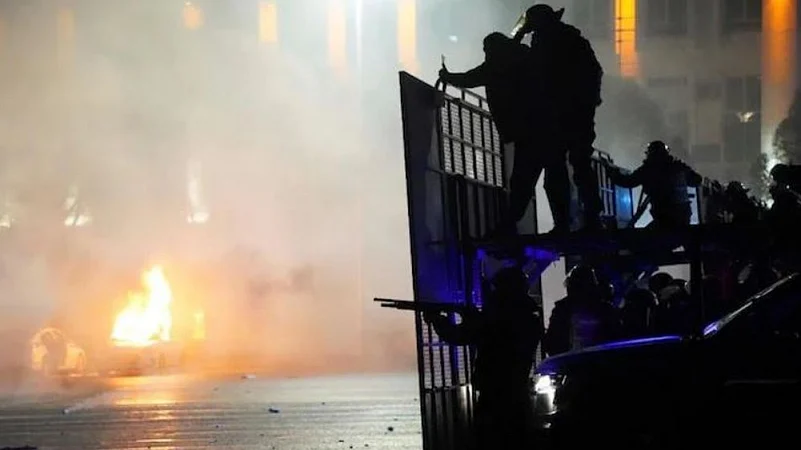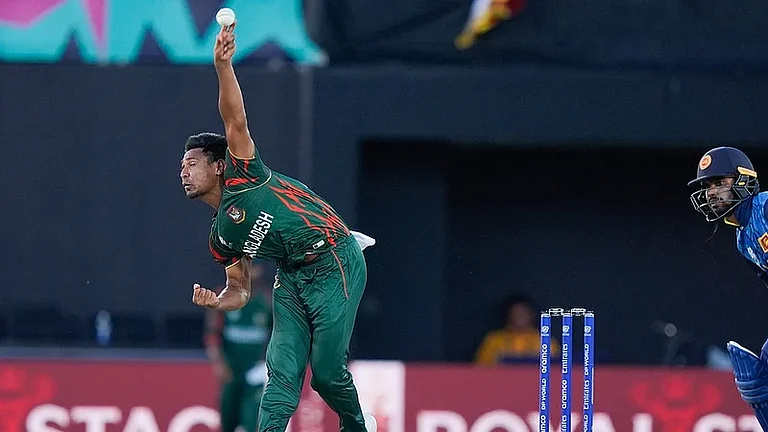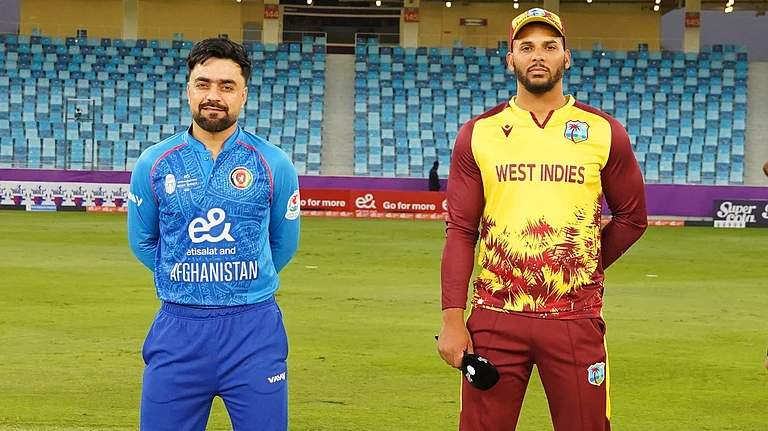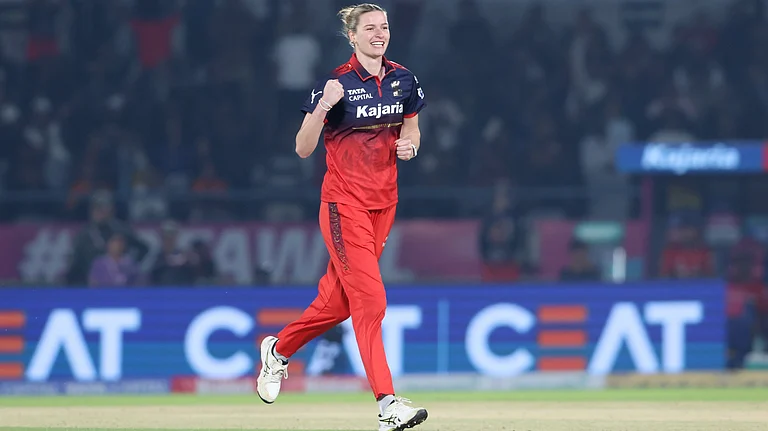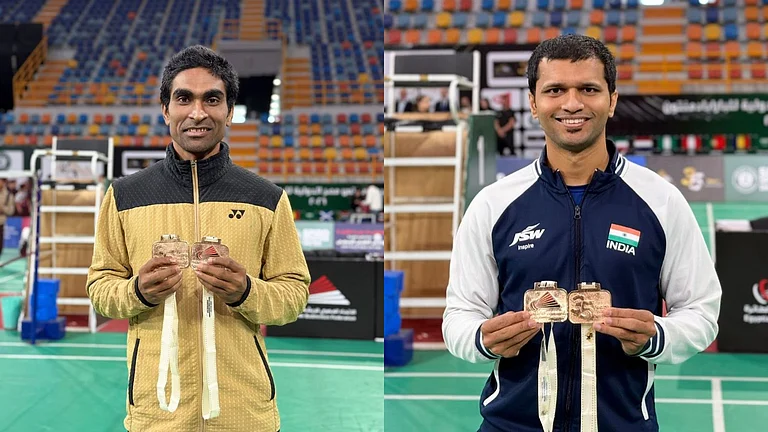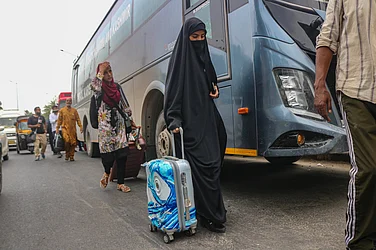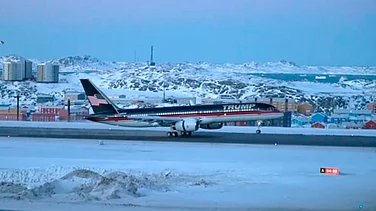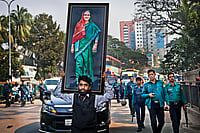Unprecedented violence rocked Kazakhstan at the start of the year, sending shockwaves through the region. More than 160 people were killed on the streets including government forces. About 400 vehicles were destroyed and 100 businesses and banks looted. President Tokayev said terrorists and thugs infiltrated the protests backed by hostile foreign forces, though he did not identify any country. He claimed it was an attempt to dislodge him from power and destabilize Kazakhstan. This is the reason he had asked his forces to shoot down the terrorists posing as protesters.
At a time when Afghanistan remains unstable and the ISIS-K, Al Qaeda and various Islamic outfits are setting up shop in the bordering provinces of the country, any trouble in the neighbourhood is bad news for the world.
The magnitude of the protests shocked those familiar with Kazakhstan, as it is one of the most stable countries in Central Asia since it gained independence in 1991 after the breakup of the former Soviet Union. Nursultan Nazarbayev, the first president ruled with an iron hand and stepped down in 2019 to pass on the baton to his chosen successor, President Kassym-Jomart Tokayev. The two remained friendly with Tokayev accommodating the former leader’s family members and loyalists in his administration. It was a cosy set-up of Kazakhstan’s elite.
Kazakhstan is also a country rich in natural resources. Not just gas and oil, but it has the world’s largest supply of uranium, and is rich in metals as well as coal. It is also the second-largest miner of Bitcoin after the US. It is the richest Central Asian country. Kazakhstan is a Muslim country, but thanks to the people’s long association with the Soviet Union, religious extremism is rare.
This is why when street protests erupted in the oil-rich western region of Kazakhstan and spread like wildfire across the country, including cities like Almaty and Nur Sultan, it came as a shock to most people. The protests were soon infiltrated by violent elements, and Russian troops came in to quell the violence. What was this all about? Protests by citizens are rare in authoritarian set-ups, so how come the eagle eyes of the country’s intelligence outfit had no hint of it? Was this also a showdown between Kazakhstan’s former strong man regarded as the father of the nation Nazarbayev and his hand-picked successor Tokayev? Nobody is quite sure. But Tokayev has taken the opportunity to throw out both Nazarbayev and the country’s long-time spy chief a loyalist of the former president. He has been charged with treason. Will these powerful figures bow to Tokayev’s diktats or is this the calm before the storm? No one is certain what is in store for Kazakhstan.
The Protests
The protests were basically against the government’s decision to remove fuel subsidies which came into effect from the first of January. As prices went up anger ripped through the population and people came out onto the streets in protest. This is the first nationwide violent protest in Kazakhstan, since independence.
What began in the western region quickly spread across the country. Initially, they were peaceful but soon got infiltrated by rowdy elements. The movement had no leaders and the anger was not just against rising fuel prices. People were venting their frustration on several counts. There was anger in the streets about corruption, the tough conditions of life for normal people, the lack of transparency and the general feeling that the government and its supporters were looting the country while the majority of people struggled to make ends meet. The pandemic added to people’s economic woes.
Government buildings and presidential residences were set ablaze and pitched street battles followed. For shops and businesses, just getting back on their feet after the pandemic, the unrest and looting was a death blow.
President Tokayev took swift action to assuage public anger and rolled back the price hike on fuel. At the same time, he dubbed the trouble makers as armed terrorists and asked his troops to fire on the trouble makers. The government led by Prime Minister Askar Mamin resigned. Yet there was no let-up to the violence of the demonstrations. Protester’s shouted slogans against former President Nazarbayev as well as the current government leaders. Unable to control the situation, Tokayev turned to the Russia-led Collective Security Treaty Organization (CSTO) for help on January 5. The Russian paratroopers arrived and were able to restore order. The situation on the face of it is now calm and the Russian troops patrolling the streets have left Kazakhstan. But what remains of the ramification of the changes made by Tokayev?
Shadow Boxing in Kazakhstan:
Was this a power struggle between two centres of power in the country? No one is quite sure. The protests, where slogans were raised against former President Nazarbayev gave Tokayev the excuse to replace his old benefactor as head of Kazakhstan’s Security Council. Tokayev assumed charge himself. He also dismissed the chief of the country’s domestic intelligence agency the KNB (equivalent to India’s IB chief, but much more powerful) Karim Masimov, a staunch Nazarbayev loyalist.
Masimov is a powerful figure and has been a mover and shaker in the political scene for decades. He was not just stripped of his position as security chief but arrested on a charge of treason. The flamboyant former banker and faithful Nazarbayev loyalist is spending his days behind bars. At a cursory glance, this looks like a blow to the Nazarbayev’s continuing dominance in the affairs of the country. There are plenty of Nazarbayev supporters in influential positions in the administration. According to reports tension between the Nazarbayev loyalists and Tokayev’s people was there from the beginning but was not out in the public space. President Tokayev sometimes tried to push out some of them and replace them with his own choice. The failure of the intelligence wing and those responsible for internal security gave Tokayev the excuse to bring in his own people.
Masimov was replaced by Yermek Sagimbayev, the man earlier entrusted with ensuring the president’s security as head of the State Protection Service. Sagimbayev is not a handover from Nazarbayev’s regime and his loyalty is with the current man at the helm.
Russia’s Role
Since Vladimir Putin took charge of Russia, he has been working to ensure that the former Soviet Union’s influence in Central Asia remains intact. Russia wants to make sure that it remains the single security provider in Central Asia. Member states of the Collective Security Treaty Organisation are Armenia, Belarus, Kazakhstan, Kyrgyzstan. Russia and Tajikistan. It is a military alliance and aims at coming to each other’s an aid in case of internal conflict or aggression from outside. Members cannot be part of any other defence agreement. It is Russia’s way of ensuring that Central Asia remains within its ambit of influence and keep out the US and Western powers. This is the first time that the CSTO was called out to help Tokayev restore order in the streets of Kazakhstan.
Though the former Soviet Republic and Kazakhstan security is closely linked with Russia’s CSTO, both Nazarbayev and Tokayev also have good equations with the US, China, EU and several other countries, including India.
Whether the protests were a flash in the pan or there is more to come is anybody’s guess.







